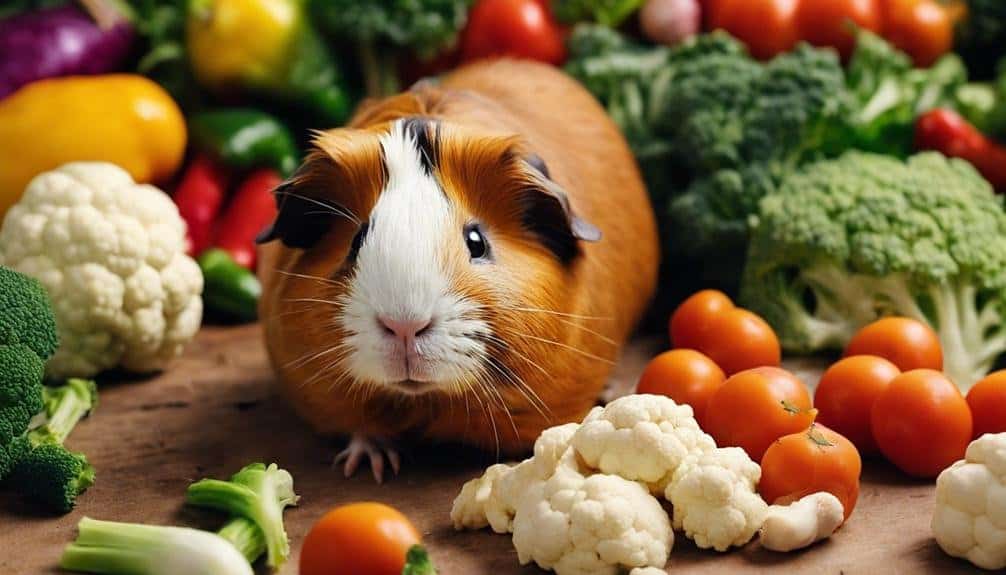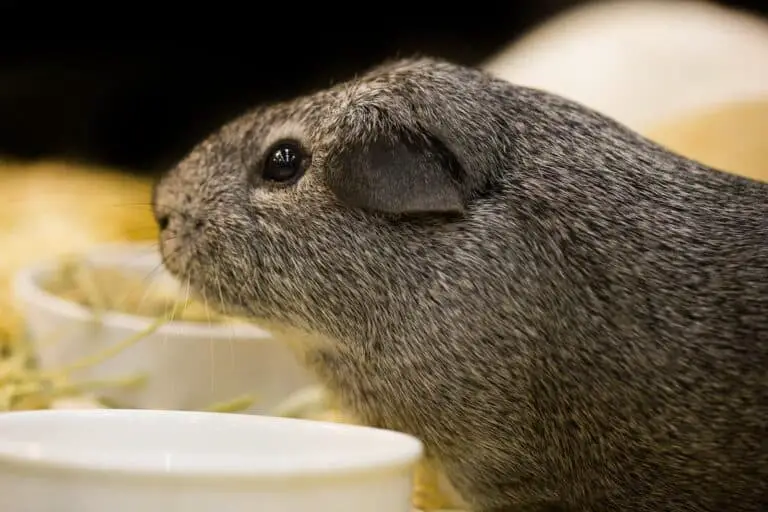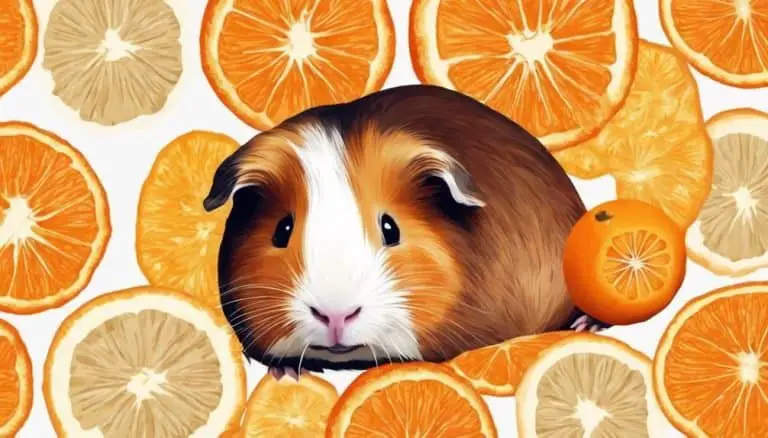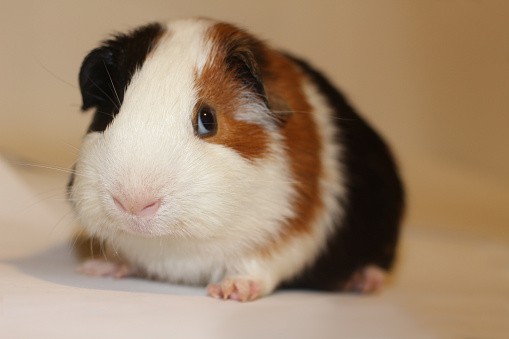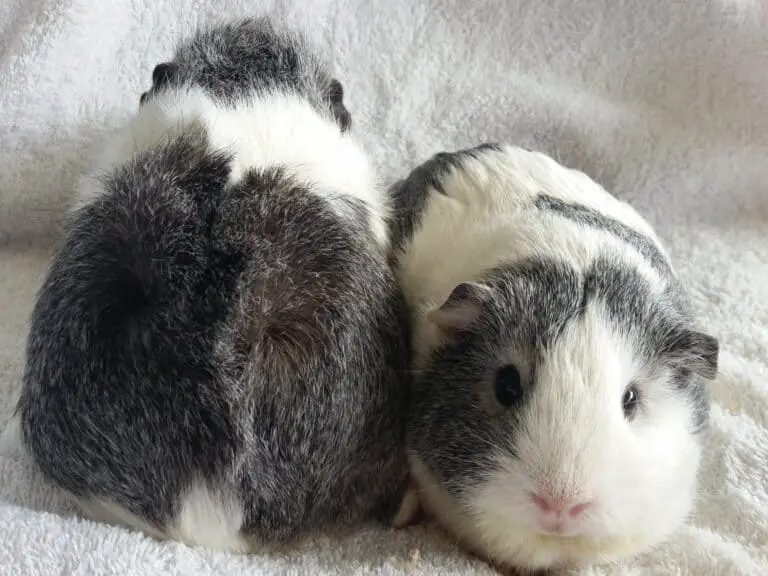How Guinea Pigs Can Safely Eat Cauliflower
Have you ever wondered if cauliflower is a safe vegetable for guinea pigs to consume?
While some may question its suitability, cauliflower can actually be a nutritious addition to a guinea pig’s diet. However, there are certain precautions that need to be taken to ensure their safety and well-being.
Let’s explore the best practices for feeding cauliflower to our furry friends and uncover the secrets to incorporating this veggie into their meals without any risks.
Benefits of Feeding Cauliflower to Guinea Pigs
Feeding cauliflower to guinea pigs provides essential nutrients like Vitamin C and K, promoting their overall health and well-being. Guinea pigs, like us, require Vitamin C in their diet to prevent conditions like scurvy. Cauliflower’s high Vitamin C content, at 46.4mg per 100g, supports their immune system, aiding in disease prevention. Additionally, the presence of Vitamin K in cauliflower is beneficial for guinea pigs as it assists in blood clotting and wound healing.
The fiber found in cauliflower is crucial for the digestive health of guinea pigs, helping with proper waste elimination and overall gut function. Furthermore, the low sugar content in cauliflower is advantageous for these small pets, as it reduces the risk of obesity and diabetes. By incorporating cauliflower into their diet, guinea pigs can enjoy a nutritious and well-rounded meal that supports their immune system, digestive health, and overall well-being.
Safe Ways to Prepare Cauliflower
When preparing cauliflower for guinea pigs, it’s important to steam or boil the vegetable to soften it for easier digestion, ensuring the safety and well-being of your pet. Here are some safe ways to prepare cauliflower for your guinea pigs:
- Steam or Boil: Cooking cauliflower helps break down its tough fibers, making it easier for guinea pigs to chew and digest.
- Avoid Seasonings: Refrain from adding any seasonings, oils, or salt when preparing cauliflower for guinea pigs as these can be harmful to their sensitive digestive systems.
- Cut into Small Pieces: To prevent choking hazards, cut cauliflower into small, bite-sized pieces that are easy for guinea pigs to nibble on.
- Introduce Gradually: When adding cauliflower to your guinea pig’s diet, do so gradually and monitor for any adverse reactions such as digestive upset or changes in behavior.
Moderation Is Key When Feeding Cauliflower

In moderation, it’s crucial to incorporate cauliflower into a guinea pig’s diet to prevent potential health issues.
Guinea pigs eat a balanced diet that should include a variety of vegetables, with cauliflower being just one part of their nutritional intake. To maintain this balance, it’s recommended to offer cauliflower treats only once or twice a week.
When serving cauliflower to guinea pigs, a one-inch floret is a sufficient portion size, ensuring they receive the benefits without overindulging. Starting with small portions is advisable, as it allows you to monitor how your guinea pig responds to cauliflower and prevents any digestive upsets.
Additionally, washing cauliflower thoroughly is essential to remove any pesticide residue before feeding it to your guinea pigs, safeguarding their health and well-being. By incorporating cauliflower in moderation and alongside a varied diet, you can ensure that your guinea pigs enjoy this vegetable safely and benefit from its nutritional value.
Considerations for Guinea Pig’s Well-Being
Considering the nutritional benefits of incorporating cauliflower into a guinea pig’s diet, it’s essential to also focus on other aspects that contribute to their overall well-being.
When it comes to guinea pigs eating cauliflower leaves, there are several considerations to keep in mind:
- Enrichment: Incorporating cauliflower leaves as part of their diet can provide enrichment for guinea pigs, stimulating their senses and encouraging natural foraging behaviors.
- Playful Behavior: Some guinea pigs may show a preference for cauliflower leaves over the florets, exhibiting playful behavior such as carrying the leaves around in their mouths.
- Monitoring: Owners should monitor uneaten cauliflower leaves promptly to prevent them from spoiling and creating unpleasant odors in the cage.
- Safe Consumption: While cauliflower leaves are safe for guinea pigs to eat, it’s important to ensure they’re introduced gradually and in moderation to prevent any digestive issues.
Recommended Cauliflower Serving Size

To ensure optimal health and balanced nutrition for guinea pigs, it’s recommended to provide them with a one-inch floret of cauliflower as a serving size. This portion size is ideal for ensuring that guinea pigs receive the nutritious benefits of cauliflower without overwhelming their systems with excess nutrients. By offering cauliflower in small, controlled portions, owners can closely monitor their guinea pigs’ response to this vegetable and prevent potential digestive issues that could arise from overconsumption.
Limiting cauliflower treats to once or twice a week helps maintain a balanced diet for guinea pigs, ensuring that they receive a variety of nutrients from different sources. Providing the appropriate serving size of cauliflower not only keeps guinea pigs safe from potential health issues but also adds a nutritious element to their diet. By monitoring their intake and sticking to the recommended serving size, guinea pigs can enjoy cauliflower as a tasty and safe addition to their overall nutritional plan.
Conclusion
In conclusion, cauliflower can be a nutritious addition to a guinea pig’s diet, providing essential vitamins and fiber.
It’s important to feed cauliflower in moderation and ensure it’s washed thoroughly before serving.
By following these guidelines and monitoring your guinea pig’s response, you can safely incorporate cauliflower into their diet to promote their overall well-being.

